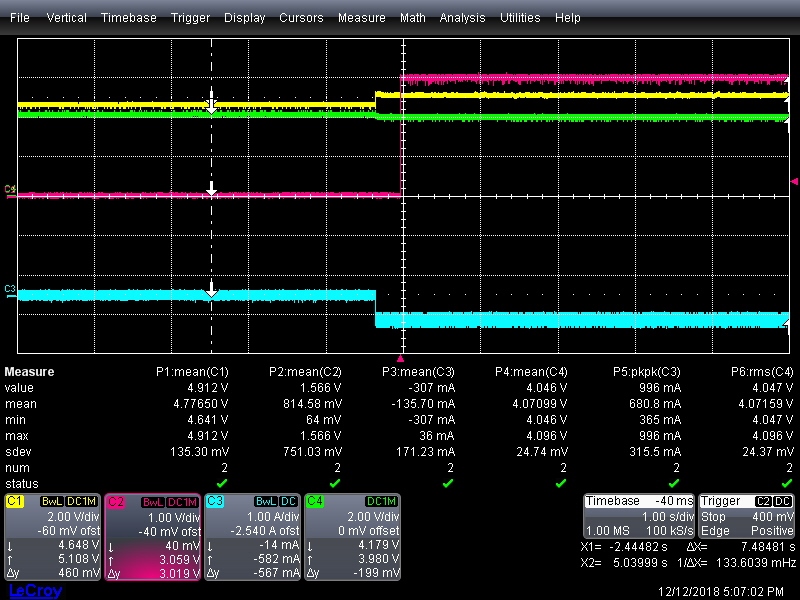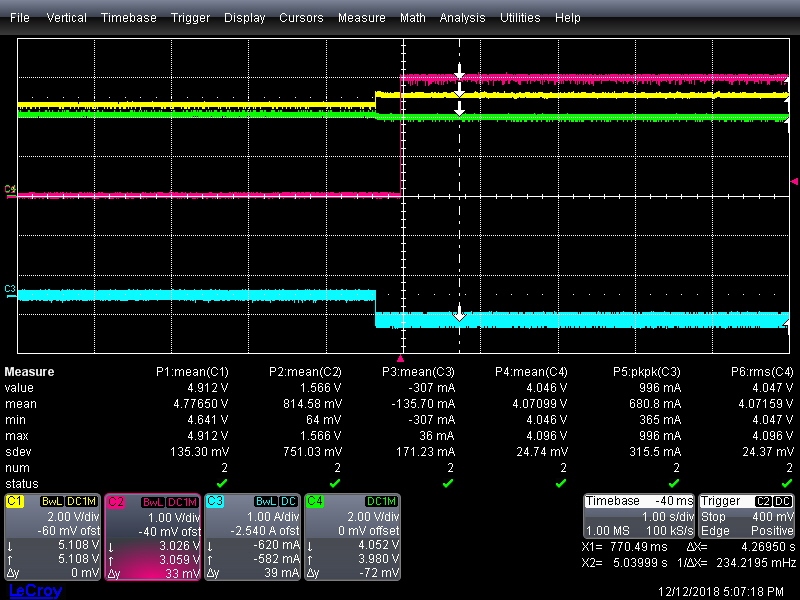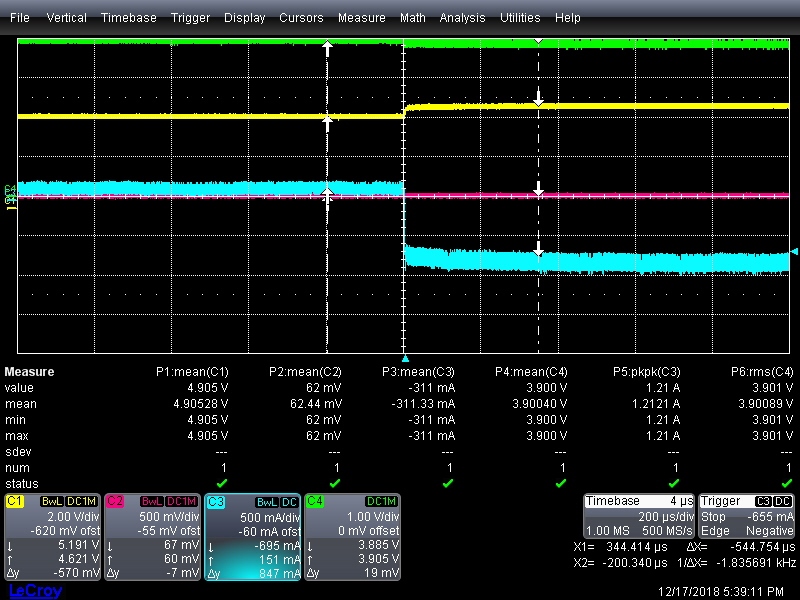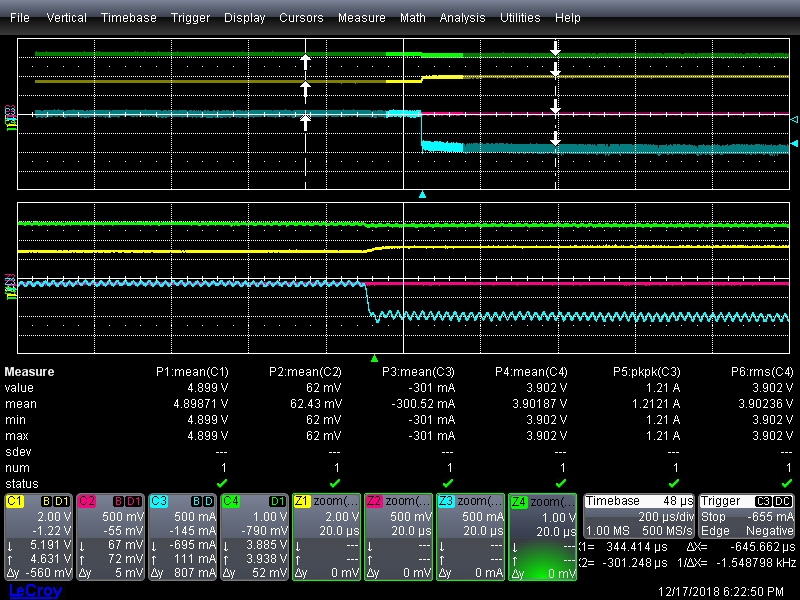Dear Sirs:
I have a question for Charge Safety Timer Expiration fault.
When would it be triggered and cleared?
We set the CHG_TIMER(REG05) to 5 hrs and enable Charging Safety Timer(EN_TIMER:1).
Polling the System Status Register(REG08) and New Fault Register (REG09).
After charging 5 hours, the value of REG08 change from 0xAC to 0x84(Fast Charging to Not Charging).
The Charge Safety Timer Expiration seems triggered, hence it stops charging.
But CHRG_FAULT does not change anymore. We try to read the REG09 many times and it is always 0.
How can I know the Charge Safety Timer Expiration fault happened?
Best Regards,





